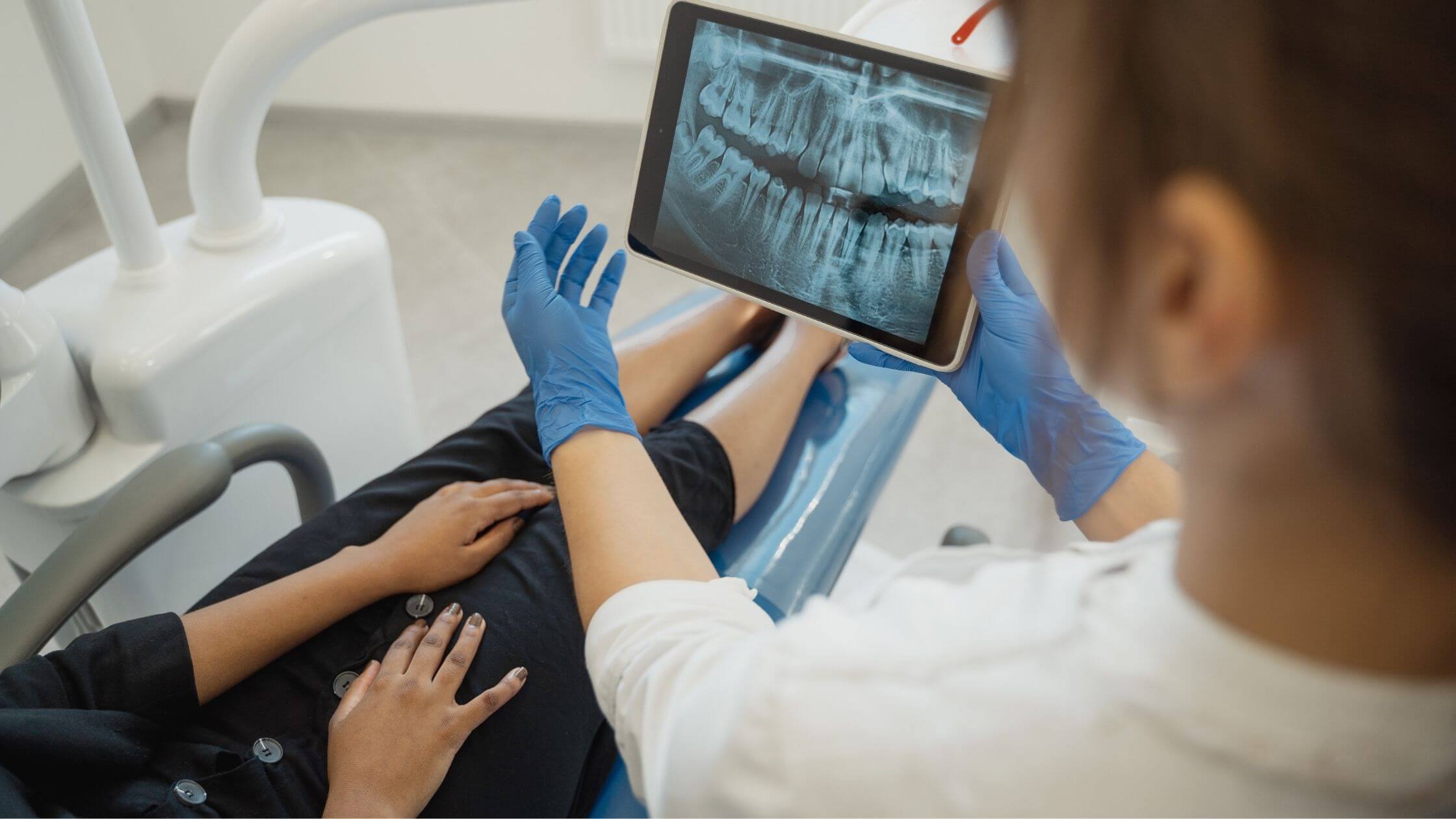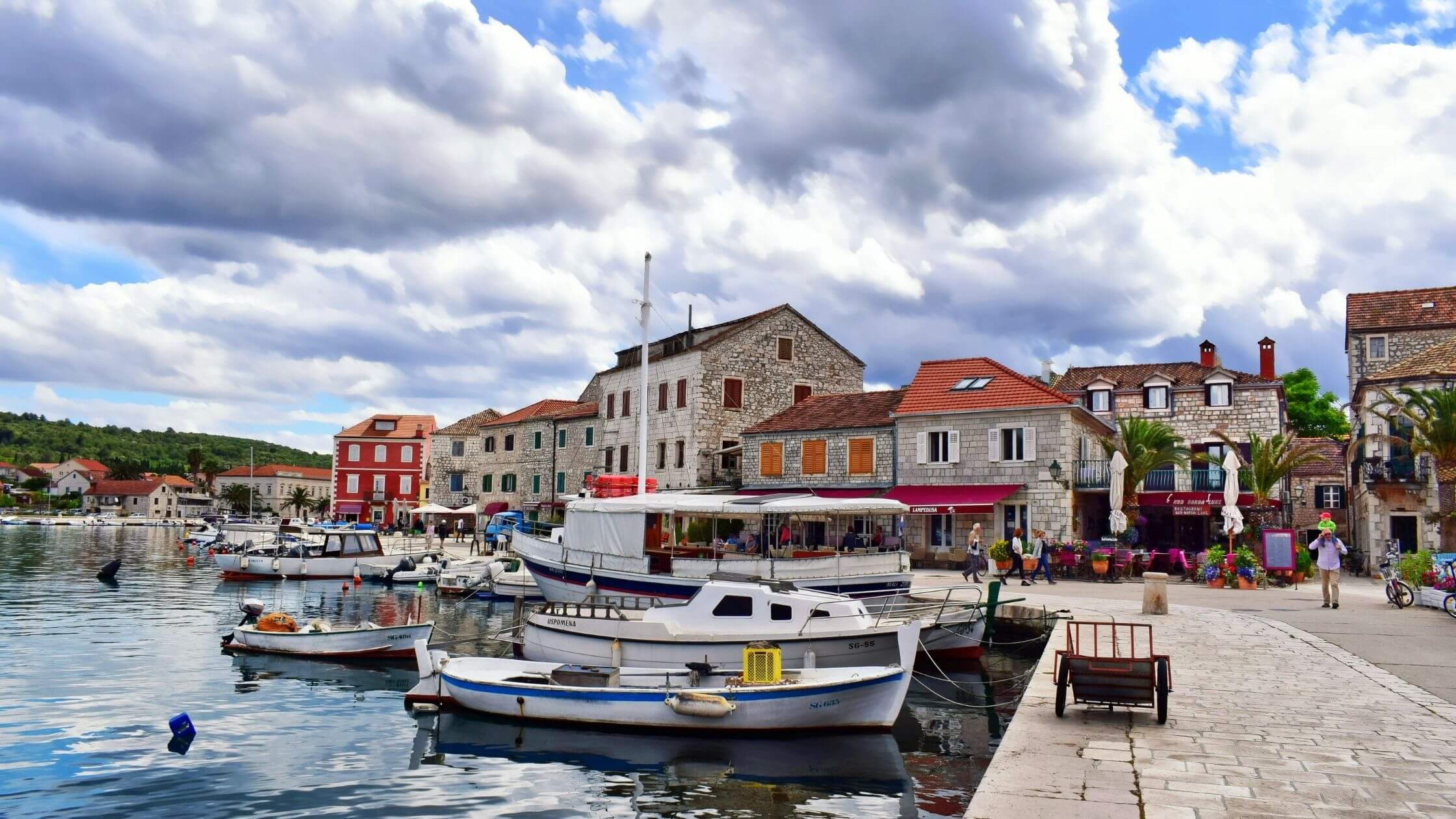Retiring in Croatia as a Non-EU National: Croatian Healthcare
February 11, 2022 - When retiring in Croatia, one of the key concerns when considering a move overseas is healthcare, and trying to navigate this space can be a daunting prospect especially for those looking to spend an extended amount of time in Croatia.
We are here to answer some of the questions on healthcare in Croatia by giving a brief overview of available options, covering factors such as costs, accessibility, and quality of healthcare.
What type of healthcare is available in Croatia?
In Croatia, as either a temporary or permanent resident, you will have access to both state and private healthcare sectors.
There are three main types of state healthcare coverage in Croatia:
- Obavezno zdravstveno osiguranje – Basic public health insurance (mandatory)
- Dopunsko zdravstveno osiguranje – Supplemental health insurance from either public or private providers
- Dodatno zdravstveno osiguranje – Premium private supplemental health insurance offered by banks and private insurers
Let’s start with the basic public health insurance “obavezno” since it is mandatory for all 3rd country residents of Croatia, unless you are on a Digital Nomad Visa, where private health insurance will suffice.
State healthcare - Overview
State healthcare in Croatia is regulated by Hrvatski zavod za zdravstveno osiguranje (HZZO), otherwise known as the Croatian Health Insurance Fund (CHIF).
The breadth and scope of this coverage is extensive. Once you’re in the system, you will have access to high-quality primary (e.g. general practitioners, gynecologists, dentists), secondary (e.g. specialists), and emergency care (e.g. hospitalization). Emergency care also extends to other member states within the European Union.
A wide range of medical prescriptions and certain healthcare aids (e.g. orthopedic, dental, diabetic) are also covered by basic public health insurance.
Before moving, check with your current doctors if your prescription is available locally, or if there is an equivalent that may be under a different brand. You can also look it up in this list if it is covered by HZZO.

Image: Pexels
State healthcare - Monthly premiums
As a 3rd country national, you can expect your monthly premiums to be around 618.75 HRK (€82) per person as of 2022. This calculation is based on the minimum salary average in Croatia as determined by the Croatian Bureau of Statistics (DZS).
However, if you are receiving a foreign pension, the onus is on you to declare it to the local authorities, especially if your pension is deposited to a Croatian bank account.
Of the amount you receive in foreign pension, 16.5% will go towards monthly HZZO premiums. This contribution is capped at a minimum amount of 618.75 HRK (€82) and a maximum of 1573.60 HRK (€208.70), based on the lowest (3,750 HRK/€497.35) and highest salary averages (9,537 HRK/€1284.85) in Croatia as of 2022.
When you first sign up for HZZO, you will also have to back pay the previous 12 months of monthly premiums even if you were not living in Croatia during that time. Assuming you have no foreign pension declared, this will amount to approximately 8,043.75 HRK (12 + 1 month) (€1066.81).
State healthcare - What will you pay for a visit?
Now that you have public healthcare, when you do see a primary healthcare professional, this care is covered under “obavezno”.
For secondary and emergency care, you pay 20% of services rendered which have minimum amounts of 25 - 100 HRK (€3.30-13.26) depending on whether you received outpatient or inpatient hospitalization care.
These payments can be reduced or removed altogether with the secondary “dopunsko” coverage which calls for another post in itself. For now, just be aware that “dopunsko” coverage costs an additional 45-75 HRK (€6-10) a month per person, and is offered by private insurers as well as HZZO.
Applying for HZZO
To apply for HZZO after your visa has been approved, you will need to download and fill in all necessary forms. As a 3rd country national, the form you’re looking for is a T-2. If you face some uncertainties on how to proceed, do visit your nearest HZZO office for guidance.
Another heads-up is that the English version of the HZZO website only gives 10% of all information available on the Croatian site so it’s better if you visit the Croatian site and do a translation.
Private healthcare - Overview
What if you find yourself needing healthcare while waiting for your visa to be processed? Or if you find yourself in a situation where you need to see a specialist on short notice for a second opinion?
Unless you require urgent medical care (in this case head to the nearest hospital), your first port of call would be to seek out a poliklinika (polyclinic) which is a private clinic.
Most polyclinics house a general practitioner who will accommodate walk-ins or offer appointments likely within the same day or week. They are also able to issue and extend prescriptions for pre-existing medical conditions.
Depending on your ailment, there are also specialized polyclinics that offer a range of services (e.g. dermatologists, gynecologists, urologists). Some policlinics also offer blood work and preventative health screening (e.g. food intolerance, cancer screening).
Croatia also offers top-notch private specialists and hospitals, which is reflected in their growing medical tourism sector. There are also private dental clinics that offer high-quality dental care at competitive rates when compared to other EU countries.

Image: Pexels
Private healthcare - What will you pay for a visit?
While costs of private healthcare vary, here is a non-exhaustive list of procedures assembled from various sources to give you an idea of what you can expect to pay out of pocket. Depending on your private healthcare policy (e.g. Cigna), you may be able to cover some of these costs but do double-check with your insurance provider.
Sample costs for general healthcare and screening:
- Basic consultation (general practitioner): 200 HRK (€27)
- Ultrasound abdominal: 250 HRK (€33)
- Mole screening: 200 HRK (€27)
- Food sensitivity tests (220 types): 2,700 HRK (€358)
- Thyroid panel tests: 450 HRK (€60)
- Breast/prostate blood panel: 2,335 HRK (€310)
- MRI-head: 2,090 HRK (€277)
- CT-Spine (3 segments): 1,030 HRK (€136)
Sample costs for surgery:
- Artificial disk replacement 113,000 HRK (€15,000)
- Knee replacement: 56,900 HRK (€7,545)
- Hip replacement: 56,730 HRK (€7,525)
- Torn achilles tendon - repair: 18,860 HRK (€2,501)
- Tennis elbow: 14,720 HRK (€1,952)
- Cataract and glaucoma (cataract surgery): 11,000 (€1,460)
The estimates above typically include pre-and post-operative consultations, but do not account for long-term rehabilitative care, or possible hotel stays if you are traveling to a specific city to undergo surgery.

Image: Pexels
Sample costs for dentistry:
- Basic consultation: 200 HRK (€26)
- Descale and polish: 480 HRK (€64)
- Root canal treatment (per root): 500 HRK (€66)
- Zirconia-based crown: 2,300 HRK (€305)
Most private healthcare providers in Croatia expect cash payment upfront. In some cases, they will accept credit or debit cards, but call or drop them a message to confirm this. If you are a resident of Croatia, some clinics will allow you to pay in installments.
(€1 = 7.54 HRK)
For more news about Croatia, click here.
Croatian Bureaucracy for Non-EU Nationals: 5 Things I Wish I’d Known
February 8, 2022 - So, how does Croatian bureaucracy for non-EU nationals look? Lyn Church shares her first-hand experience.
Croatian bureaucracy is notorious for being a frustrating, anxiety-riddled process, where your confidence from reading countless “how-to” guides evaporates the moment you come face-to-face with any government official.
I'm sharing 5 pieces of advice that I wish someone had shared with me when we embarked on this journey.
Rather than a definitive “guide-to-something”, I hope it helps you better understand what you can come to expect as a 3rd country national when you undertake a bureaucratic process in Croatia.
1. Bureaucracy everywhere is tedious
If you think paperwork in Croatia is the absolute worst, the broader reality is that this pain point is not specific to Croatia. Bureaucracy, in general, is challenging, more so if you’re going through the process outside your home country, or in an unfamiliar language.
For instance, the time when I had to resubmit my Permanent Residency application to Immigration and Citizenship Canada. After months of collecting the voluminous documents needed for the application, they rolled out an entirely new system with new forms and requirements.
Or, when Parisian officials misplaced all my documents for l'Assurance Maladie after waiting 6 months, having to resend the entire dossier, before waiting another year to receive the equivalent of an HZZO card.
Even Sweden, so bureaucratically efficient you can file taxes via SMS, was prone to the occasional hiccup. Opening a bank account without a personal number (‘Personnummer’) was impossible, but at the same time, needing a bank account for a personal number was a wild game of chicken and egg.

Image: Pexels
2. Official information is often interpreted and executed independently from what’s written
Long story short, you can read, analyze, cite these regulations all you want down to the very letter, and still have things not go as planned.
Here’s one example from when we moved. According to MUP, I may be granted Temporary Residence under family reunification, “only if (my spouse) has had a continuous temporary residence permit for at least one year”.
Essentially, we had to live apart until his 1-year work anniversary in order to meet this requirement. Fast forward 11 months, we made the application and were subsequently told by officials that my spouse, as the main applicant, had to have been working for not one, but two years.
Fortunately, this was eventually resolved with some elbow grease, lots of patience, and a dear friend who doubled as a translator, but that’s a story for another day.
3. Seek anecdotal advice
Building from the previous point, I believe it’s best to seek advice from those who have successfully (or unsuccessfully) navigated the complex landscape.
Depending on which the most appropriate for your situation, reach out to expats, digital nomads, or retirees via social media groups, blogs, or websites. Don’t be afraid to ask for help!
This way, you get a first-hand account regarding the matter on hand and gain additional insights on living in Croatia in general. The one you’ll hear a lot around here is how Croatia, and Split specifically, is a different world during the Summer and Winter months.
As an added bonus, the services they may recommend (e.g. attorney, accountant, translator) are also more likely to be familiar with your specific situation and requirements involved.
A heads-up though that going the professional services route will not guarantee a positive outcome, nor will it hasten processing times.

Image: Pexels.
4. Be prepared to wait
Processing times will likely vary depending on what visa you’ve applied for but typically, from submission of documents to obtaining your Temporary Residence Card can be around 3-4 months. I’ve even heard of 6–8-month processing times.
Adding to this extended waiting period is that there is no way to track your application progress. A couple of days after submitting all your documents, you may receive an email confirming the application has been received.
Thereafter, it may be a month or more before you hear back from an official.
You can reach out directly to your MUP via phone or email, or through your attorney (who will likely also email or call them on your behalf) but getting a firm response on the progress of your application is unlikely.
The good news is that you’re allowed to stay and travel within Croatia while your Visa application is in process, so take this time to savor and explore.
5. Change happens quickly
Finally, the bureaucratic landscape in Croatia has undergone quite a few changes in the last few years. A process that worked for someone before, may no longer work today and vice versa.
For example, the fact that Croatia introduced a Digital Nomad Visa is a significant way forward for 3rd country nationals to stay for a longer term in Croatia which was not a viable option when we moved in 2018.
On the flip side, even with the first applicant approved in January 2021, there were still numerous uncertainties over what kind of health coverage was needed for applicants, the threshold for proof of income, or whether they would have to pay local taxes.
The requirements for healthcare (i.e. HZZO) were only finalized mid-February 2021, while proof of sufficient income significantly increased between the beginning of February 2021 and the end of February 2021.
That being said, we will always try our best to give you the most accurate, updated information when we can.

Harbour in Croatia. Image: Pexels
It seems difficult, why should we go through with this?
Well, it’s like asking someone, why does (something) make you happy?
It’s such a highly subjective feeling that is an amalgamation of situations, contexts, and interactions that makes life here really gratifying, in spite of the bureaucratic uncertainties.
All I can say is keep an open mind, come, see and experience living here for yourselves.
For more, check out our lifestyle section.
600,000 Residents in Croatia Were Born Abroad, Where Are They Located?
The unemployment rate for young people up to 29 years of age is the highest among Croatia's domestic population, and the lowest among young people from third countries.
As Poslovni Dnevnik writes on the 21st of April, 2019, the Republic of Croatia is among the countries of the EU with the best integrated immigrants from third countries, which can only be met with surprise by those people who do not know that these ''immigrants'' are actually mostly just Croats born in neighbouring Bosnia and Herzegovina, followed by a few immigrants from Serbia, Germany, Slovenia, Kosovo and Macedonia.
According to the latest census, 584,947 (13.7 percent) of the population of Croatia were born abroad. The number of migrants are as follows: Serbia (9 percent), Germany (5.8 percent), Kosovo (3.5 percent), Slovenia (3.4 percent), Macedonia ( 1.7 percent). Immigrants to Croatia, predominantly from Bosnia and Herzegovina, are doing much better in terms of the employment rate of young people up to 29 years of age, meaning that they're significantly better integrated into the Croatian labour market than those born in Croatia and those from other EU countries.
This data were presented by sociologists Snježana Gregurević and Sonja Podgorelec, and social geographer Sanja Klempić Bogadi from the Institute for Migration and Ethnicity in the presentation "The Influence of Immigrant Groups on the Social Cohesion of the Receiving Society - the case of Croatia".
A large number of Croatian residents born in Bosnia and Herzegovina are the result of labour migration during the socialist period of Yugoslavia and immigration during the Bosnian war. Most immigrants from Bosnia and Herzegovina live in Zagreb (98,579), Split-Dalmatia County (36,864), Zagreb County (35,427), Brod- Posavina (29,537) and Osijek-Baranja County (28,051), these are the "entrance" Croatian counties, those closest to the border regions of Bosnia and Herzegovina, with the exception of Dubrovnik-Neretva County, from which emigration towards Croatia was the most intensive,'' stated Klempić Bogadi.
By the year 2015, Croatia, along with Serbia, Germany and Austria, was the most common destination for immigrants from Bosnia and Herzegovina. However, since 2016, the trend is for the Bosnian population to migrate to Germany and Austria, and the number of such persons in Croatia and Serbia is steadily decreasing.
"According to Eurostat's data, immigrants from third countries, predominantly immigrants from Bosnia and Herzegovina, are better involved in the Croatian labour market than the domestic population and immigrants from other EU countries in terms of the employment rate of young people aged from 15 to 29. The employment rate of young people from third countries in Croatia is higher by 18 percent when compared to the employment of domestic youth,'' said Snježana Gregurović.
As stated, the unemployment rate for young people up to 29 years of age is highest among the domestic Croatian population, and is actually the lowest among young people from third countries.
"Because of their small share of the total population of Croatia, immigrants haven't endangered or undermined the country's social cohesion. Because of the modest share of the immigrant population in Croatia who do not have Croatian ethnic origin, and the large share of those who do have it, the integration challenges are not yet posing any sort of significant cost to the state, or a threat to the domestic population,'' says Podgorelec.
In Zagreb, the largest concentration of immigrants from Bosnia and Herzegovina live in Sesvete, where the research "Influence of immigrants from Bosnia and Herzegovina on the socio-demographic development of Croatian urban regions" was conducted on a sample of 301 people aged 18 and over born in Bosnia and Herzegovina.
Most of them (93.4 percent) were ethnic Croats, ethnic Serbs made up 3.7 percent of them, Bosniaks made uo 2.3 percent, and 0.7 percent was made up of others. Otherwise, 85.2 percent of Croats born in Bosnia and Herzegovina and living in Croatia are actually Croats, 6.3 percent of them are actually Serbs, and just 6 percent are Bosniaks.
A third of respondents hold dual citizenship, (Croatian and Bosnia and Herzegovina). Almost half of them work, of which 68 percent are mostly in trade or the construction industry. 14.6 percent are unemployed, those who stay at home make up 6.6 percent, pensioners make up 29.2 percent, and students and pupils in education make up 2.7 percent. The largest number of immigrants from Bosnia and Herzegovina living in Sesvete have secondary education, and 6,3 percent have higher education.
"Most respondents feel very welcome in the local community, they have a strong sense of belonging to the Croatian society, and they vote in large numbers during elections in the Republic of Croatia, but are exceptionally poorly involved in any organisation and/or civil society. Given the fact that many of them also have Croatian citizenship and therefore they vote in the elections in the Republic of Croatia, many are significantly less interested in political developments in Bosnia and Herzegovina, which shows a high level of political integration,'' concluded Podgorelec, reports Večernji list.
Make sure to follow our dedicated lifestyle page for much more.


